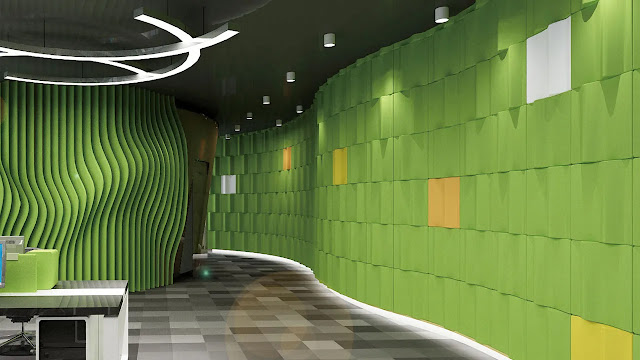Best Insulation For Soundproofing Walls - Insulating your walls is an effective way to reduce noise transmission between rooms or from the outside. There are several options for insulating walls to improve soundproofing, and the best choice for you will depend on the specific needs of your space and budget.
list of best insulation for soundproofing walls
1. Mass-Loaded Vinyl (MLV)
Mass-loaded vinyl (MLV) is a heavy, flexible material that is effective at blocking sound. It is often used as a sound barrier in walls, floors, and ceilings. MLV is typically installed by attaching it to the surface of the wall using adhesive or mechanical fasteners. It can be used on its own or in combination with other types of insulation.
Pros: MLV is effective at blocking sound and is relatively inexpensive. It is also easy to install and can be cut to fit any space.
Cons: MLV is not the most aesthetically pleasing option, as it is a thin, shiny material that can look out of place in some spaces. It is also not as effective at blocking low-frequency sounds, such as bass from a stereo or home theater system.
2. Fiberglass Batt Insulation
Fiberglass batt insulation is a common type of insulation made from fibers of glass that are spun into a mat. It is typically used in walls, floors, and ceilings to improve energy efficiency and reduce noise transmission.
Pros: Fiberglass batt insulation is a cost-effective option for soundproofing walls. It is also easy to install and can be cut to fit any space.
Cons: Fiberglass batt insulation is not as effective at blocking sound as some other options, and it can also irritate skin and respiratory systems if not handled properly.
3. Sound Absorbing Panels
Sound absorbing panels are designed to absorb sound waves and reduce noise transmission. They can be made from a variety of materials, including foam, fiberglass, and mineral wool. Sound absorbing panels can be mounted on walls or ceiling to improve the acoustics of a room.
Pros: Sound absorbing panels are effective at reducing echo and improving the overall sound quality of a space. They are also easy to install and can be removed or relocated if needed.
Cons: Sound absorbing panels can be expensive, and they may not be as effective at blocking sound transmission between rooms or from the outside.
4. Soundproof Drywall
Soundproof drywall, also known as "quiet rock," is a specialized type of drywall that is denser and heavier than standard drywall. It is designed to block sound transmission between rooms and is often used in walls, floors, and ceilings.
Pros: Soundproof drywall is effective at blocking sound and can be used in any room of the house. It is also relatively easy to install and can be painted or finished like regular drywall.
Cons: Soundproof drywall is more expensive than standard drywall, and it is also heavier, which can make it more difficult to work with.
5. Acoustic Insulation
Acoustic insulation is a type of insulation specifically designed to block sound transmission. It is made from a variety of materials, including mineral wool, foam, and fiberglass, and is typically installed in walls, floors, and ceilings.
Pros: Acoustic insulation is effective at blocking sound transmission and can be used in any room of the house. It is also relatively easy to install and can be cut to fit any space.
Cons: Acoustic insulation can be more expensive than other types of insulation, and it may not be as effective at blocking low-frequency sounds.
6. Soundproofing Sealants and Caulks
Soundproofing sealants and caulks are used to fill gaps and cracks in walls, floors, and ceilings to block sound transmission. They are typically made from a variety of materials, including silicone, latex, and polyurethane, and are applied using a caulking gun.
Pros: Soundproofing sealants and caulks are relatively inexpensive and easy to install. They can be used to fill small gaps and cracks that may not be sealed by other types of insulation.
Cons: Soundproofing sealants and caulks are not as effective at blocking sound as other options, and they may need to be reapplied periodically. They are also not suitable for use in structural areas of the home.
In conclusion
There are several options for insulating walls to improve soundproofing. The best choice for you will depend on the specific needs of your space and budget. Mass-loaded vinyl and soundproof drywall are both effective at blocking sound transmission, but they may be more expensive than other options. Fiberglass batt insulation and acoustic insulation are more cost-effective, but they may not be as effective at blocking sound. Sound absorbing panels and soundproofing sealants and caulks can be used to improve the overall sound quality of a space, but they may not be as effective at blocking sound transmission between rooms or from the outside.
